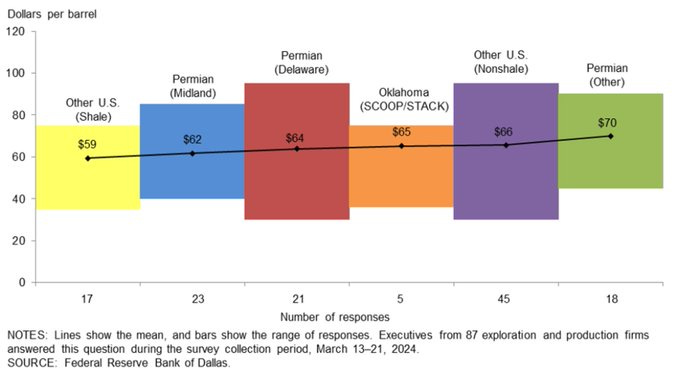[[{“value”:”
ENB Pub Note: This article is from The Crude Truth Substack. I agree with the point that a single basin output does not define the country’s energy production capabilities. So, has the United States hit peak oil and gas production, or is it just one basin? I agree with Rey Trevino that we are not done yet. The United States will find a way, and let’s get California under control. They used to be energy independent until Gavin showed up.
Today, on Oilprice.com, Charles Kennedy has a great article about peak production in the United States. There is a lot of talk about peak production in the Permian Basin due to water constraints, and the amount of water required in the tier two wells.
Charles writes:
- Energy flows intelligence firm Kpler forecasts that US crude oil supply growth will slow for the rest of 2025 and into 2026, and peak as early as this year.
- Kpler attributes this revised forecast to WTI crude oil prices falling below $60 per barrel, which is testing the breakeven point for many US shale oil producers.
- The latest OPEC+ decision to increase output is putting pressure on US crude production, leading Kpler to believe that US output will peak in 2025.U.S. crude oil supply will rise more slowly than expected for the rest of 2025 and in 2026 and peak as early as this year, as WTI benchmark prices below $60 per barrel are testing the breakeven point of shale production, energy flows intelligence firm Kpler said on Monday.
Oil prices have slipped by more than 15% since the beginning of April as the market fears recessions from the U.S. tariffs and oversupply from the aggressive production hikes from OPEC+. Prices dipped early on Monday after the OPEC+ group decided on Saturday to raise collective output by 411,000 barrels per day (bpd), nearly triple the volume originally scheduled.
The U.S. benchmark, WTI Crude, was trading at about $57 per barrel—a price point that is below the breakeven levels for many shale wells, especially those outside the prime acreage and hottest spots in the Permian.
With the low oil prices, Kpler has now cut its U.S. crude supply forecast by 120,000 barrels per day (bpd) to 170,000 bpd for the rest of 2025 and into 2026, “as weaker prices threaten to slow shale production.”
“With WTI, the main US benchmark crude, now near breakeven levels for new wells, producers are likely to cut back drilling,” said the analysts at Kpler.
U.S. shale producers are the most reactive to oil price changes and they are typically quick to follow the price trends. Lower margins are prompting caution among the American oil industry, Kpler noted.
The latest OPEC+ move to fight for market share and discipline U.S. shale is putting pressure on U.S. crude output, said Kpler, which now expects America’s crude production to peak in 2025 and gradually decline after that.
Despite steady near-term activity, growth is slowing in the U.S. shale patch, and U.S. crude output is set to peak this year, Kpler noted.
I have a slightly different view. One basin does not determine a country’s oil and gas output.
As an American oil producer, we must consider the economics of each well in our drilling programs. We decide based on drilling costs, offset locations, and known production volumes in the same formations. It is a solid formula, and if the economics don’t work, we don’t drill. The following chart by the Dallas Fed has an excellent survey summary of basin costs.

That being said, new areas in Alaska and the Gulf of America have yet to be tapped. The reserves in California are a different story. California was energy independent before Gavin Newsom’s energy insanity took control. They have decreased to just a handful of wells annually and are importing 70% of their oil from countries that despise the United States. The energy hypocrisy is astonishing. The ecological damage he is doing to the state will be challenging to recover from during his tenure as governor.
Make no mistake: “California is now a National Security risk,” says author and energy leader Ronald Stein.
Our great exploration and production companies in the United States, both private and public, are not daunted by delivering the oil and gas we need to keep the United States energy independent.
I like how the Trump administration’s leadership talks about “Energy Dominance.” Secretary of Energy Chris Wright has said it is about maintaining our energy independence and dominating energy around the globe. This mindset, coupled with reducing regulations and costs, will get us through the next few decades.
We give you energy news and help invest in energy projects too, click here to learn more
Crude Oil, LNG, Jet Fuel price quote
ENB Top News
ENB
Energy Dashboard
ENB Podcast
ENB Substack
The post What is the future for U.S. crude oil? Have we hit peak production? appeared first on Energy News Beat.
“}]] 
